Are you doing the same thing over and over and expecting different results?
Riding the same feature with the same technique and expecting different results is insanity! The next time you find yourself challenged on the trail, take a step back to troubleshoot and change your plan of attack. To help, we’ve outlined 10 considerations for diagnosing a problem, making a change, and finding both success + sanity on the trail!
1. Where are you looking?
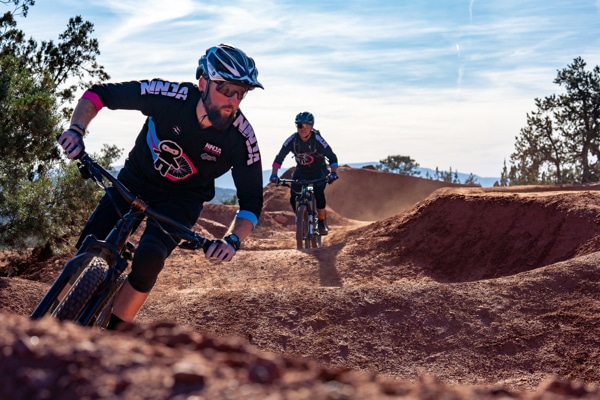
The first thing I ask myself when I don’t clear a feature on the trail is “where was I looking?”. Wherever you are looking – that is where you (and your bike) are going. If you are trying to avoid a big rock in the middle of the trail, stop staring right at it! Instead, see the rock as you approach and then look past the rock to where you want to go. Keep focusing on your exit and your bike will follow. Keeping your eyes up and looking ahead is especially helpful for clearing technical climbs and cleaning tight switchbacks.
2. Consider compression
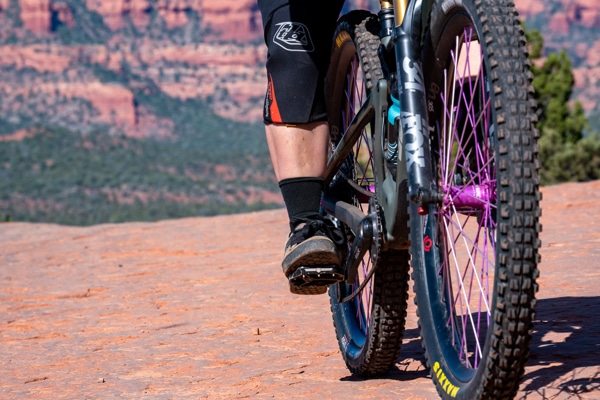
Compression is a key component to so many riding skills including lofting your wheel onto a rock, clearing a jump or bunny hopping over a log. If you are asking yourself… “wait, what is compression?!” Compression is the act of stomping your feet quickly – think STOMP. Compression is a short and powerful movement initiated with your feet, resulting in an equal and opposite explosion (or rebound) and helping to lift your bike and/or wheel(s) into the air.
Often times when riders are struggling with a feature, they think “… if I just go faster or harder, I’ll clear this!”. Stop right there! Focusing on speed is often not the solution. Compression may be the answer you are looking for!
If you are struggling to clear a jump, rather than just trying to go “faster”, focus on your compression. Do you need more compression? And what about the timing of your compression, perhaps you are compressing a little too soon or a little too late? If you are overshooting a table top jump, maybe you need a little less compression.
3. Look at line selection
Often the most worn out part of the trail is NOT the best line. Is your line not working? Try something else! Take a step back to consider alternative line options and then try them. You’ll be surprised how fun (and successful) your rides will be when you mix up your lines.
4. Pick the right tool for the job
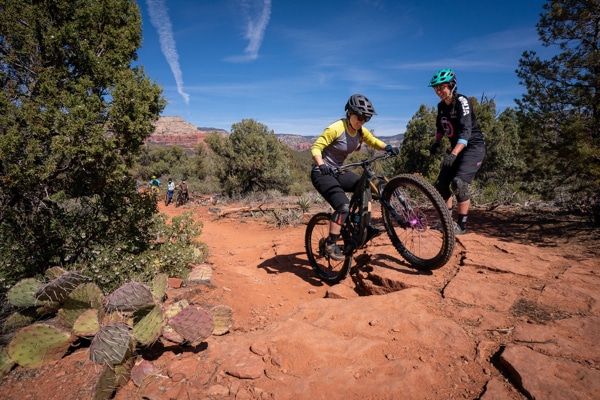
Are you practicing the pedal n’ pray technique? You know, the technique where you pedal into a feature with no real plan and half the time you clean it and the other times you crash? Yikes. Let’s make this a thing of the past.
First and foremost, make sure you understand WHAT skills are at play for the trail feature you are riding. If you are riding a set of rollers, you may want to pump through the trail or manual. If you are on a technical climb and striking your pedal, try adding a quick ratchet. If there is a log in the middle of the trail and you don’t have enough speed for a level lift, try a bunny hop.
If one skill doesn’t seem to be working, reach into your tool bag and consider what else you could try.
5. Where are your thoughts?
Never underestimate the power of positivity. Anger, frustration and defeat will do nothing to help you accomplish your goals. If you are feeling flustered, take a deep breath, reset and try again with a “can do” attitude.
Sometimes you’ll catch me talking to myself out on the trail. I’ll say out loud “I got this…I got this…” as I tackle a technical climb. And you want to know what? Usually this works and before you know it I’m at the top of the climb.
6. Set expectations
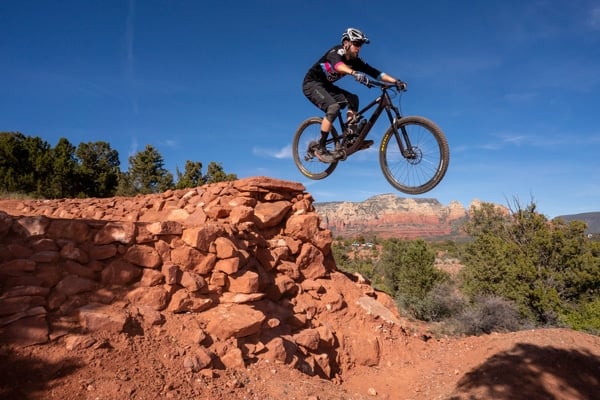
You can’t expect to go from zero to hero. You can’t expect to go from jumping off a curb to hitting a 10ft drop in a day. Improving your skills on the mountain bike is all about progression. Take baby steps as you work your way up to bigger features and to avoid frustration, don’t forget to give yourself props along the way for all the mini-successes.
7. The power of video
Have a friend take a video of you riding so you can watch yourself ride. Consider filming in slow motion. Sometimes what you THINK your body is doing is not actually what’s going down, and you can’t change something until you recognize it’s an issue. Being able to see yourself on camera can help to illuminate differences in what you are thinking vs. doing.
Some quick words of wisdom – avoid posting a video to Facebook and asking a random assortment of internet friends who *think* they are experts for their opinion. This is a recipe for getting bad advice! Try to critique your own video or ask a focused trustworthy source.
8. Read up
It’s time to study!
Find a Ninja article covering the skill or topic you want to work on. These articles break down skills and topics into easy to follow and understand progressions. Next, print it out and take it with you on your next ride. Having the article in your pocket to refer back to mid-ride can be a huge help. Then get out there and practice, practice, practice. Browse our How To articles here.
Pssst – If you can’t find a Ninja article on a particular skill, shoot us a note and let us know! We’ve love to put together some tips for you.
9. Attend a clinic for in-person feedback
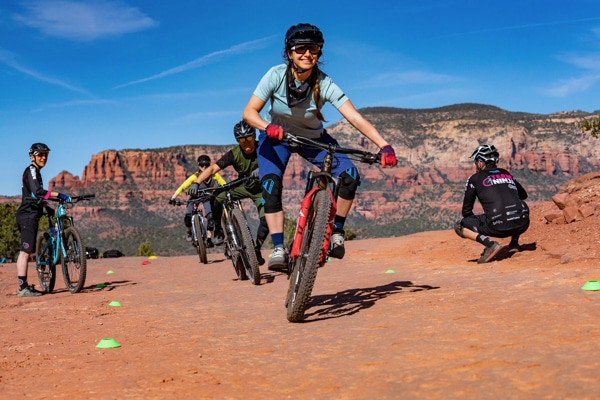
Having a professionally certified instructor give you in-person feedback in real time is invaluable. An instructor can quickly help you to identify problem area, offers tips for improvement and teach you some pretty cool skills you didn’t even know you needed! All Ninja Clinics are taught in a progressive manner where one skills builds on the next. This allows rider to progress at their own pace and fully understand the components of each on-trail skill. Click here to find a skills event near you.
10. Seek online instruction and feedback
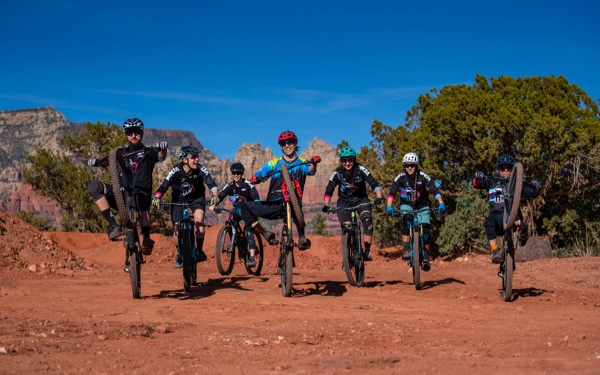
After attending a skills clinic in person, connect with an online community such as the Ryan Leech Connection (RLC) where you can continue your learning journey with video skills. All Ninja participants receive a 30 day free trial of RLC after attending a clinic!
Thanks for letting us be your guide to finding sanity on the trail since 2010!
